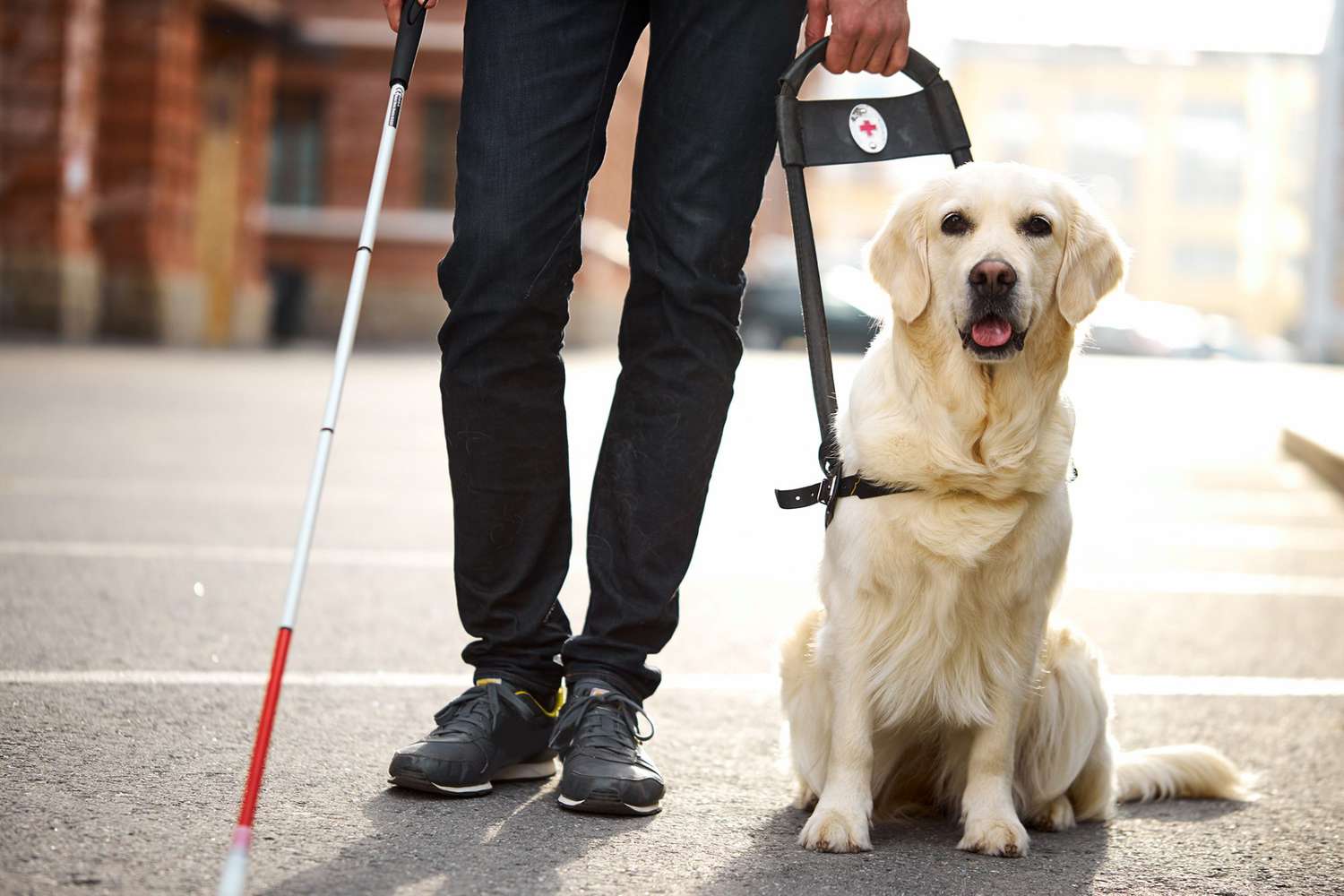Home>Health & Wellness>Common Health Issues>Muscular and Joint Health>How Does Arthritis Appear In X-Rays On A Dog?


Muscular and Joint Health
How Does Arthritis Appear In X-Rays On A Dog?
Modified: March 1, 2024
Learn how arthritis appears in X-rays on dogs and how to maintain their muscular and joint health. Find expert advice and tips for managing arthritis in dogs.
(Many of the links in this article redirect to a specific reviewed product. Your purchase of these products through affiliate links helps to generate commission for Pawsomeoldies.com, at no extra cost. Learn more)
Table of Contents
Introduction
Arthritis is a common condition that affects both humans and our beloved canine companions. It is a degenerative joint disease that can cause pain, stiffness, and reduced mobility in dogs. As pet owners, it's essential to understand the impact of arthritis on our furry friends and how it can be diagnosed and managed effectively.
Arthritis in dogs can be a result of various factors, including genetics, aging, obesity, joint injuries, or developmental disorders. The condition can manifest in different forms, such as osteoarthritis, rheumatoid arthritis, or septic arthritis, each with its unique characteristics and implications for a dog's well-being.
Recognizing the signs of arthritis in dogs is crucial for early intervention and improved quality of life for our four-legged companions. While dogs cannot verbally express their discomfort, they may exhibit subtle changes in behavior, such as reluctance to engage in physical activities, limping, or difficulty rising from a resting position. These signs often prompt pet owners to seek veterinary care to address their furry friend's discomfort and ensure their overall health and happiness.
In this article, we will delve into the intricacies of arthritis in dogs, exploring the role of X-rays in diagnosing the condition, common signs of arthritis visible in X-rays, and the available treatment options. By gaining a deeper understanding of these aspects, pet owners can become proactive in managing their dog's arthritis and providing the necessary support to enhance their well-being.
Understanding the impact of arthritis on dogs and the diagnostic tools available is essential for fostering a nurturing and supportive environment for our canine companions. Let's embark on this enlightening journey to unravel the complexities of arthritis in dogs and empower ourselves to be advocates for their health and happiness.
Read more: How To Administer Dental X-Rays On Dogs
Understanding Arthritis in Dogs
Arthritis, a prevalent condition in dogs, can significantly impact their quality of life. It is crucial for pet owners to comprehend the nuances of this degenerative joint disease to provide optimal care for their furry companions. Arthritis in dogs can manifest in various forms, with osteoarthritis being the most common. This condition involves the progressive deterioration of joint cartilage, leading to pain, inflammation, and restricted mobility for the affected dog.
Several factors contribute to the development of arthritis in dogs, including genetic predisposition, aging, obesity, joint injuries, and developmental disorders. Large breed dogs are particularly susceptible to arthritis due to their size and weight, which places increased stress on their joints. Additionally, certain breeds may inherit genetic traits that predispose them to joint issues, underscoring the importance of breed-specific awareness and proactive joint health management.
As dogs age, the wear and tear on their joints can exacerbate the development of arthritis. This natural aging process can lead to the breakdown of cartilage and the onset of joint inflammation, resulting in discomfort and reduced mobility for the aging canine. Furthermore, obesity can exacerbate arthritis in dogs, as the excess weight places additional strain on their joints, accelerating the degenerative process and intensifying their discomfort.
Understanding the impact of arthritis on dogs goes beyond recognizing the physical symptoms. It also involves acknowledging the emotional and psychological toll it can take on our loyal companions. Dogs experiencing arthritis may exhibit changes in behavior, such as decreased interest in physical activities, reluctance to climb stairs, or difficulty rising after rest. These subtle signs of discomfort underscore the importance of proactive joint health management and early intervention to alleviate their suffering and enhance their overall well-being.
By gaining a comprehensive understanding of arthritis in dogs, pet owners can become proactive advocates for their furry friends' joint health. This knowledge empowers them to recognize the early signs of arthritis, seek timely veterinary care, and explore effective management strategies to improve their dog's comfort and mobility. Ultimately, by understanding the complexities of arthritis in dogs, pet owners can cultivate a nurturing environment that prioritizes their canine companion's joint health and overall happiness.
The Role of X-Rays in Diagnosing Arthritis
X-rays play a pivotal role in diagnosing arthritis in dogs, offering valuable insights into the structural integrity of their joints and the extent of degenerative changes. When a dog exhibits symptoms of joint discomfort or mobility issues, veterinarians often rely on X-rays to assess the underlying causes and formulate an accurate diagnosis.
X-rays, also known as radiographs, provide a non-invasive means of visualizing the internal structures of a dog's joints, including the bones, cartilage, and surrounding tissues. This imaging modality enables veterinarians to identify abnormalities such as joint inflammation, bone spurs, cartilage erosion, and changes in joint alignment, all of which are indicative of arthritis.
In the diagnostic process, X-rays allow for the comparison of affected joints with those of a healthy reference, facilitating the identification of degenerative changes and abnormalities. This comparative analysis aids in determining the severity of arthritis and formulating an appropriate treatment plan tailored to the individual needs of the affected dog.
Moreover, X-rays enable veterinarians to differentiate between various forms of arthritis, such as osteoarthritis, rheumatoid arthritis, and septic arthritis, based on the distinct patterns of joint degeneration and inflammation visible in the images. This differentiation is crucial for implementing targeted treatment strategies and managing the specific manifestations of each arthritis type effectively.
Additionally, X-rays serve as a valuable tool for monitoring the progression of arthritis in dogs over time. By capturing images at different stages of the disease, veterinarians can track the evolution of joint degeneration, assess the efficacy of treatment interventions, and make informed adjustments to the management plan as needed.
In essence, X-rays are instrumental in the diagnostic journey of arthritis in dogs, providing veterinarians with comprehensive visual data to accurately assess the extent of joint degeneration and formulate tailored treatment approaches. This imaging modality not only aids in the initial diagnosis but also serves as a valuable tool for ongoing monitoring, ensuring that the management of arthritis in dogs is dynamic and responsive to the evolving needs of the affected canine companions.
Common Signs of Arthritis in X-Rays
When examining X-rays for signs of arthritis in dogs, veterinarians look for specific indicators that reveal the presence and severity of joint degeneration. These signs provide valuable insights into the structural changes within the affected joints, guiding the diagnostic process and informing the development of targeted treatment plans.
-
Joint Space Narrowing: One of the primary indicators of arthritis visible in X-rays is the narrowing of the joint space. In healthy joints, there is a distinct gap between the bones, which is maintained by the presence of smooth, protective cartilage. However, in arthritic joints, this space becomes progressively reduced due to cartilage erosion and the formation of bony outgrowths, known as osteophytes or bone spurs. The narrowing of the joint space is a hallmark sign of arthritis, reflecting the degenerative changes that compromise joint function and contribute to discomfort in affected dogs.
-
Osteophyte Formation: The development of osteophytes, or bone spurs, is a prominent feature of arthritis visible in X-rays. These bony outgrowths form at the edges of the joint surfaces as a response to the ongoing degeneration of cartilage and the subsequent attempt by the body to stabilize the affected joint. Osteophytes not only contribute to the narrowing of the joint space but also serve as indicators of chronic joint inflammation and the progressive nature of arthritis in dogs.
-
Subchondral Bone Changes: X-rays also reveal changes in the subchondral bone, which refers to the layer of bone just beneath the joint cartilage. In arthritic joints, subchondral bone undergoes alterations, such as increased density or the presence of cysts, indicative of the ongoing degenerative process. These changes reflect the structural impact of arthritis on the affected joints and provide critical information for assessing the severity of the condition.
-
Joint Deformities: Arthritis in dogs can lead to joint deformities, which are evident in X-rays as alterations in joint alignment and shape. These deformities result from the cumulative effects of cartilage erosion, bone remodeling, and the formation of osteophytes. The presence of joint deformities in X-rays underscores the advanced stage of arthritis and the substantial impact it has on the structural integrity of the affected joints.
-
Soft Tissue Changes: Beyond bone and cartilage alterations, X-rays may also reveal soft tissue changes surrounding the affected joints. These changes can include joint effusion, or the accumulation of fluid within the joint space, as well as soft tissue swelling indicative of inflammation. These soft tissue changes complement the bony findings in X-rays, providing a comprehensive view of the multifaceted impact of arthritis on the affected joints.
By recognizing these common signs of arthritis in X-rays, veterinarians can accurately assess the extent of joint degeneration, formulate targeted treatment plans, and monitor the progression of arthritis in dogs over time. This comprehensive understanding of the visible indicators of arthritis in X-rays empowers veterinary professionals to provide tailored care that addresses the specific needs of each affected canine companion, ultimately enhancing their comfort and quality of life.
Treatment Options for Arthritis in Dogs
The management of arthritis in dogs encompasses a multifaceted approach aimed at alleviating discomfort, improving mobility, and enhancing the overall quality of life for affected canine companions. From lifestyle modifications to targeted interventions, the treatment options for arthritis in dogs are designed to address the specific needs of each individual and mitigate the impact of joint degeneration.
Lifestyle Modifications
Implementing lifestyle modifications forms the cornerstone of arthritis management in dogs. Maintaining a healthy weight through balanced nutrition and regular exercise is crucial for reducing the strain on the joints and slowing the progression of arthritis. Additionally, providing supportive bedding and minimizing activities that exacerbate joint discomfort, such as excessive jumping or strenuous exercise, can significantly improve the well-being of dogs with arthritis.
Pharmacological Interventions
Pharmacological interventions, including nonsteroidal anti-inflammatory drugs (NSAIDs), are commonly prescribed to alleviate pain and inflammation associated with arthritis in dogs. These medications help manage discomfort and improve mobility, enabling affected dogs to engage in daily activities with reduced hindrance. However, it is essential to administer NSAIDs under veterinary supervision to monitor their efficacy and minimize potential side effects.
Nutraceuticals and Supplements
Nutraceuticals and supplements, such as glucosamine and chondroitin, are widely utilized to support joint health and mitigate the progression of arthritis in dogs. These natural compounds aid in preserving cartilage integrity, reducing inflammation, and promoting joint lubrication, contributing to enhanced comfort and mobility for affected canine companions. Integrating these supplements into the daily regimen of dogs with arthritis can complement other treatment modalities and support long-term joint health.
Physical Therapy and Rehabilitation
Physical therapy and rehabilitation play a pivotal role in the comprehensive management of arthritis in dogs. Therapeutic exercises, hydrotherapy, and massage techniques are employed to improve joint flexibility, strengthen supportive muscles, and alleviate discomfort. These modalities not only enhance mobility but also foster a sense of well-being for dogs grappling with arthritis, promoting an active and fulfilling lifestyle.
Read more: How Fast Does Arthritis Progress In Dogs
Surgical Interventions
In cases of advanced arthritis or structural joint abnormalities, surgical interventions may be considered to address the underlying issues and alleviate the associated discomfort. Procedures such as joint debridement, osteotomy, or joint replacement can offer long-term relief and restore functionality to the affected joints, enabling dogs to regain mobility and enjoy an improved quality of life.
Complementary and Alternative Therapies
Complementary and alternative therapies, including acupuncture, laser therapy, and chiropractic care, are increasingly recognized for their efficacy in managing arthritis in dogs. These holistic modalities complement traditional treatment approaches, providing additional avenues for pain relief, inflammation reduction, and overall joint health support. Integrating these therapies into the arthritis management plan can offer a holistic and personalized approach to addressing the unique needs of each affected dog.
By embracing a comprehensive array of treatment options, pet owners and veterinary professionals can collaborate to develop tailored management strategies that prioritize the comfort, mobility, and well-being of dogs grappling with arthritis. This proactive and multifaceted approach empowers pet owners to provide the necessary support and care for their furry companions, fostering a nurturing environment that promotes joint health and overall happiness for dogs affected by arthritis.
Conclusion
In conclusion, the journey of understanding arthritis in dogs and the role of X-rays in its diagnosis has shed light on the complexities of this degenerative joint disease and the pivotal role of diagnostic imaging in guiding effective management strategies. By delving into the intricacies of arthritis, pet owners and veterinary professionals gain valuable insights into the multifaceted impact of this condition on the well-being of our canine companions.
The comprehensive understanding of arthritis in dogs encompasses the recognition of its diverse forms, including osteoarthritis, rheumatoid arthritis, and septic arthritis, each presenting unique challenges and implications for affected dogs. By acknowledging the various factors contributing to the development of arthritis, such as genetics, aging, obesity, and joint injuries, pet owners are empowered to proactively address the specific needs of their furry friends and prioritize joint health management.
The role of X-rays in diagnosing arthritis in dogs is instrumental, offering a non-invasive means of visualizing the structural changes within the affected joints and facilitating accurate assessments of joint degeneration. The visible signs of arthritis in X-rays, including joint space narrowing, osteophyte formation, subchondral bone changes, joint deformities, and soft tissue alterations, provide critical insights that guide targeted treatment interventions and ongoing monitoring of the disease progression.
Furthermore, the diverse treatment options for arthritis in dogs, ranging from lifestyle modifications and pharmacological interventions to physical therapy, surgical interventions, and complementary therapies, underscore the multifaceted approach to managing this condition. By embracing a comprehensive array of treatment modalities, pet owners and veterinary professionals collaborate to develop tailored management strategies that prioritize the comfort, mobility, and overall well-being of dogs grappling with arthritis.
Ultimately, the journey of understanding arthritis in dogs and the role of X-rays in its diagnosis culminates in the empowerment of pet owners to become proactive advocates for their furry companions' joint health. By recognizing the early signs of arthritis, seeking timely veterinary care, and exploring effective management strategies, pet owners foster a nurturing environment that prioritizes the well-being and happiness of their canine companions.
As we embark on this enlightening journey, let us continue to champion the joint health of our beloved dogs, leveraging our knowledge and understanding to provide the necessary support and care for their enduring comfort and vitality. Together, we can create a future where dogs affected by arthritis thrive in an environment that celebrates their resilience and unwavering spirit, embodying the essence of compassionate companionship and unwavering devotion.













